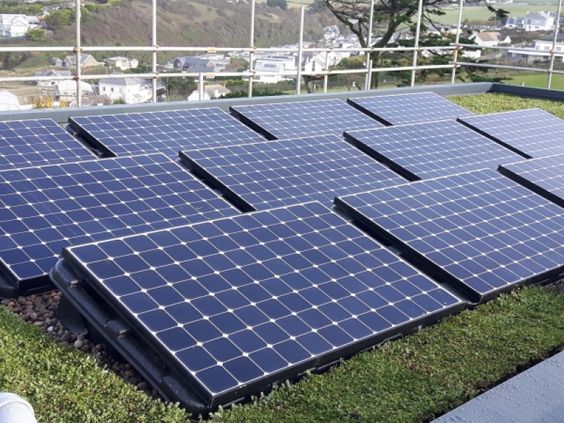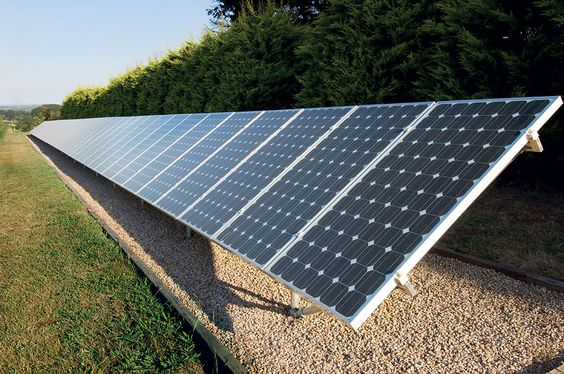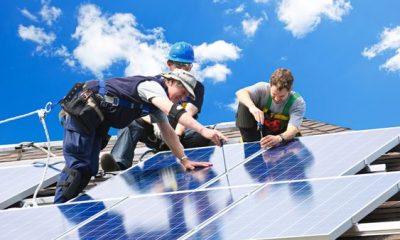Home Solar Energy
Ground-Mounted Solar Panel Installation Best Practices

Ground-Mounted Solar Panel Installation Best Practices
I. Introduction
Ground-mounted solar panel installations are becoming increasingly popular as a clean and sustainable energy source. Whether you’re a homeowner, business owner, or a renewable energy enthusiast, understanding the best practices for ground-mounted solar installations is crucial for maximizing energy production and ensuring the longevity of your system.
In this comprehensive guide, we’ll explore the key factors and steps involved in a successful ground-mounted solar panel installation.
Solar Panel Installation Best Practices
II. Site Selection
A. Evaluating Sun Exposure
One of the first considerations in ground-mounted solar panel installation is ensuring optimal sun exposure. Conduct a thorough analysis of your site to determine the sun’s path throughout the day. This will help you position your panels for maximum sunlight exposure, typically facing south for Northern Hemisphere locations.
B. Assessing Terrain and Soil Conditions
The terrain and soil quality at your installation site are critical factors. Conduct soil tests to assess load-bearing capacity and stability. Rocky or uneven terrain may require additional preparation and costs, so it’s important to plan accordingly.
C. Considering Local Regulations
Before you begin your installation, check local regulations and zoning laws. Some areas have specific requirements for solar installations, including setbacks, height restrictions, and permitting. Compliance with these regulations is essential to avoid legal complications.
III. System Design
A. Choosing the Right Solar Panels
Selecting the appropriate solar panels is crucial for efficiency and long-term performance. Consider factors such as panel efficiency, durability, and warranty when making your choice. Monocrystalline and polycrystalline panels are common options, each with its advantages.
B. Optimal Panel Orientation and Tilt
Proper panel orientation and tilt can significantly impact energy production. Depending on your location’s latitude, adjust the tilt angle to maximize sun exposure throughout the year. Solar tracking systems can further optimize panel angles for enhanced efficiency.
C. Array Layout and Spacing
The layout of your solar panel array is essential. Avoid shading from nearby objects like trees or buildings, which can reduce energy production. Calculate spacing between panels to prevent shading while maximizing the use of available space.
Solar Panel Installation Best Practices
IV. Foundation and Mounting Structures
A. Types of Foundation Systems
Choose the appropriate foundation system based on your site conditions. Common options include ground screws, concrete footings, and ballast mounts. Ensure the chosen foundation is strong enough to support the panels in all weather conditions.
B. Material Selection and Durability
Select high-quality materials for mounting structures. Galvanized steel is a popular choice due to its durability and resistance to corrosion. Properly engineered mounts and materials are essential for withstanding environmental challenges.
C. Secure Mounting Techniques
Properly secure the solar panels to the mounting structures to prevent damage from strong winds and heavy snow loads. Follow manufacturer guidelines for mounting and fastening.
V. Electrical Components
A. Inverters and Their Role
Inverters convert DC (direct current) generated by the solar panels into AC (alternating current) usable in your home or business. Choose the right type of inverter, such as string inverters, microinverters, or power optimizers, based on your system size and design.
B. Wiring and Connection Methods
Use high-quality wiring and connectors to minimize energy losses. Ensure proper grounding to prevent electrical hazards. Follow local electrical codes and regulations during installation.
C. Safety Measures for Electrical Installations
Safety is paramount when dealing with electrical components. Install appropriate disconnect switches, surge protection, and safety labels. Consider working with a licensed electrician for wiring and connection tasks.
VI. Grounding and Bonding
A. Ensuring Proper Grounding
Proper grounding is essential to protect against electrical faults and lightning strikes. Install grounding rods and ensure a low-resistance path to earth for safety.
B. Bonding for Safety and Functionality
Bonding connects all metal components of the solar system, preventing differences in voltage that can lead to electrical issues. Bonding ensures the safe and efficient operation of your solar panel system.
Solar Panel Installation Best Practices
VII. Maintenance and Monitoring
A. Regular Inspection Checklist
Establish a routine maintenance schedule that includes cleaning the panels, checking for damage, and inspecting wiring and connections. Regular maintenance helps identify and address issues early.
B. Cleaning and Dealing with Debris
Dirt, dust, and debris can accumulate on solar panels, reducing their efficiency. Cleaning panels periodically can help maintain optimal performance. Be cautious when cleaning to avoid damaging the panels.
C. Monitoring Systems for Performance
Invest in monitoring systems that track your solar system’s performance in real time. These systems provide valuable data and alerts for early detection of problems.
VIII. Environmental Considerations
A. Land Use and Ecosystem Impact
Consider the environmental impact of your solar installation. Minimize disruption to local ecosystems and wildlife habitats. Implement sustainable landscaping around the installation site.
B. Sustainability Practices in Installation
Choose eco-friendly materials and construction practices whenever possible. Explore options for recycling old panels when they reach the end of their lifespan.
IX. Cost Considerations
A. Budgeting and Financing
Carefully plan your budget for the entire installation process, including materials, labor, permits, and maintenance costs. Explore financing options and incentives, such as tax credits or rebates, to offset expenses.
B. Long-term Cost Savings
While the initial cost of solar panel installation may seem significant, consider the long-term savings on energy bills. Solar panels have a long lifespan and can provide substantial energy cost reductions over time.
X. Conclusion
In conclusion, ground-mounted solar panel installation can be a rewarding investment in clean energy. By following best practices in site selection, system design, construction, and maintenance, you can maximize the benefits of your solar panel system. Remember to stay informed about local regulations and incentives to make the most of your sustainable energy journey.
Implementing these best practices not only ensures the efficiency and longevity of your ground-mounted solar panels but also contributes to a greener and more sustainable future.

















Pingback: How A Solar Panel Generates Energy: An In-Depth Explanation » ArenaHub
Pingback: How To Join Community Solar Program » ArenaHub
Pingback: How To Troubleshoot Solar Panel Problems » ArenaHub